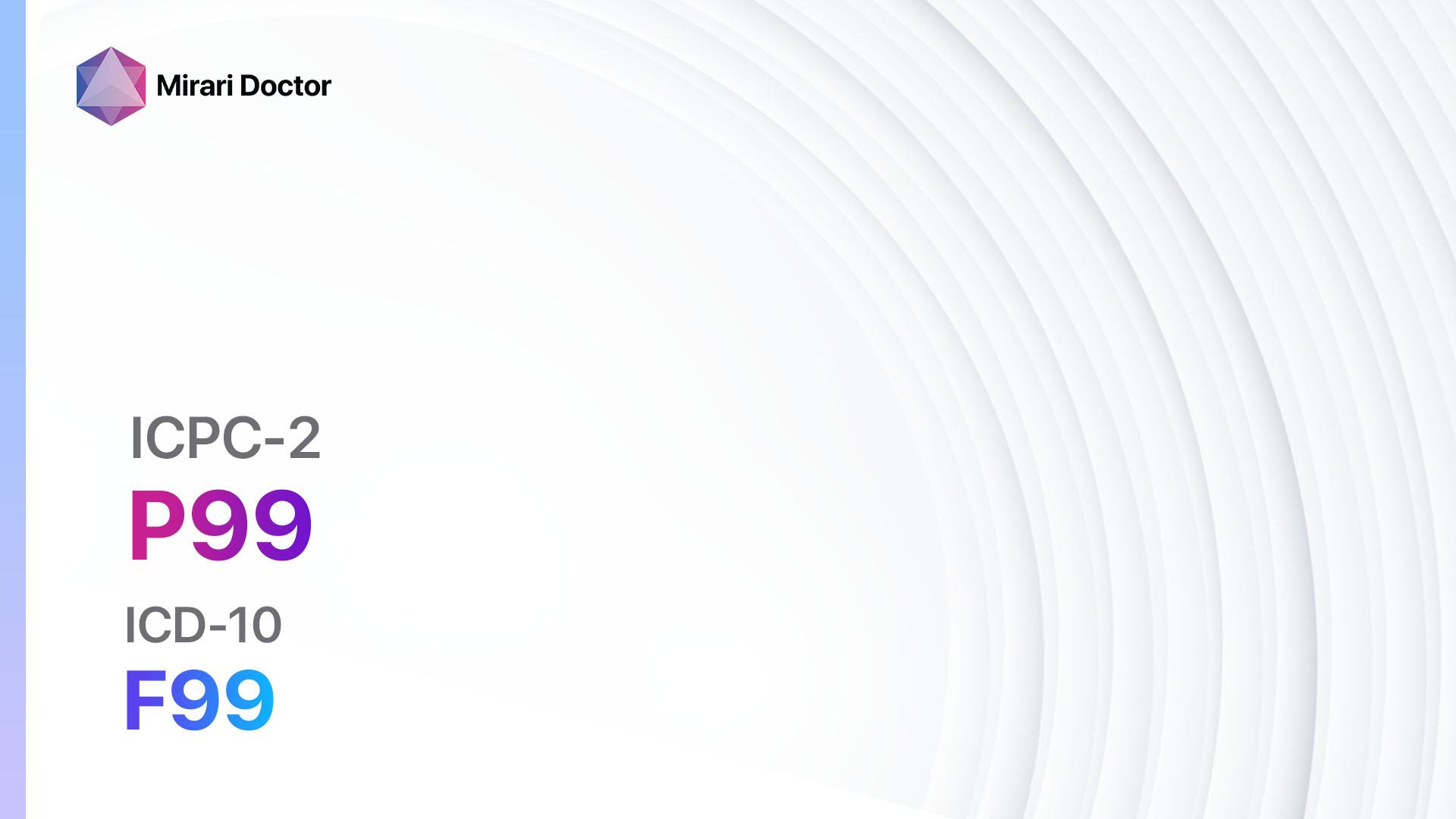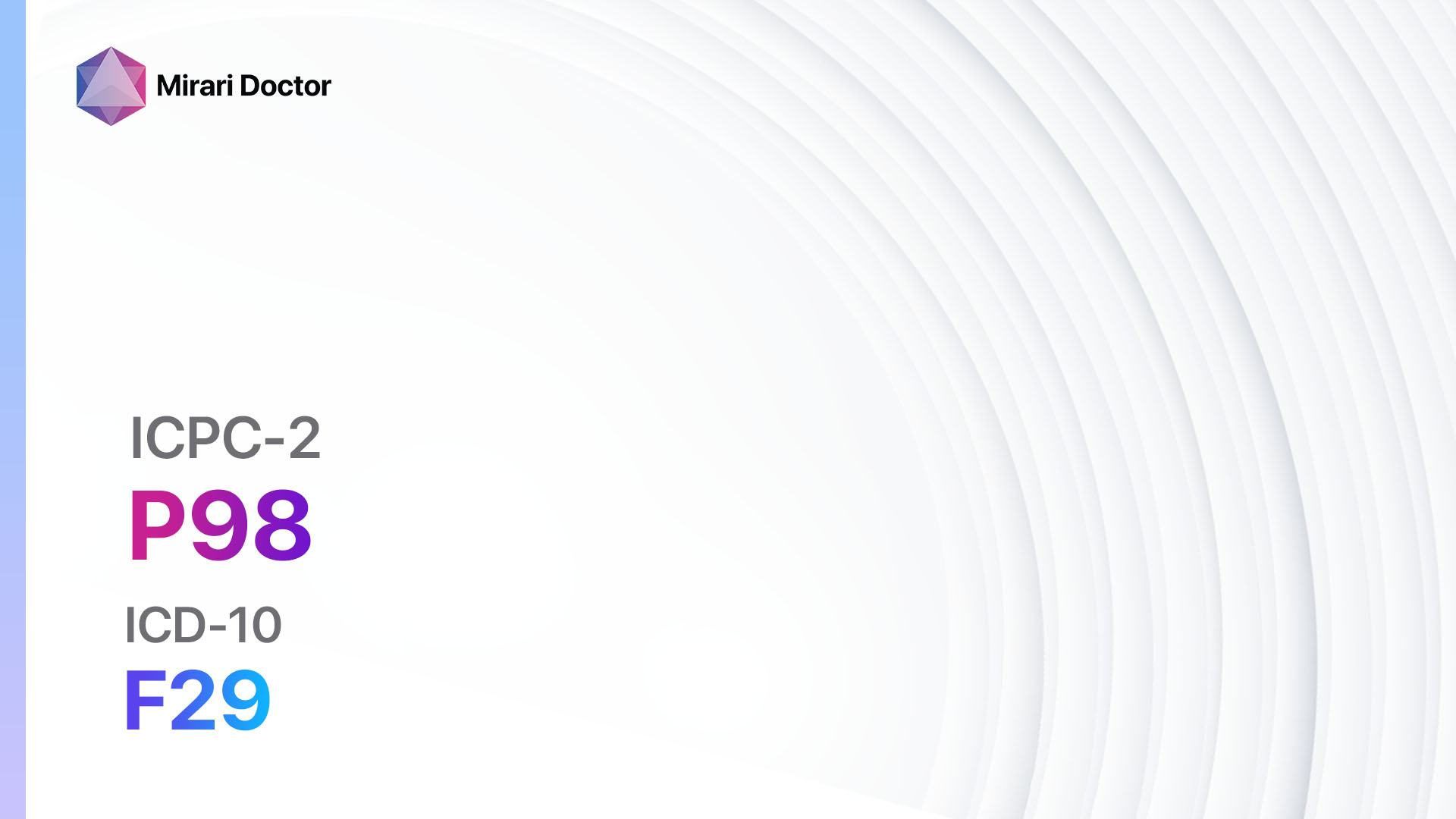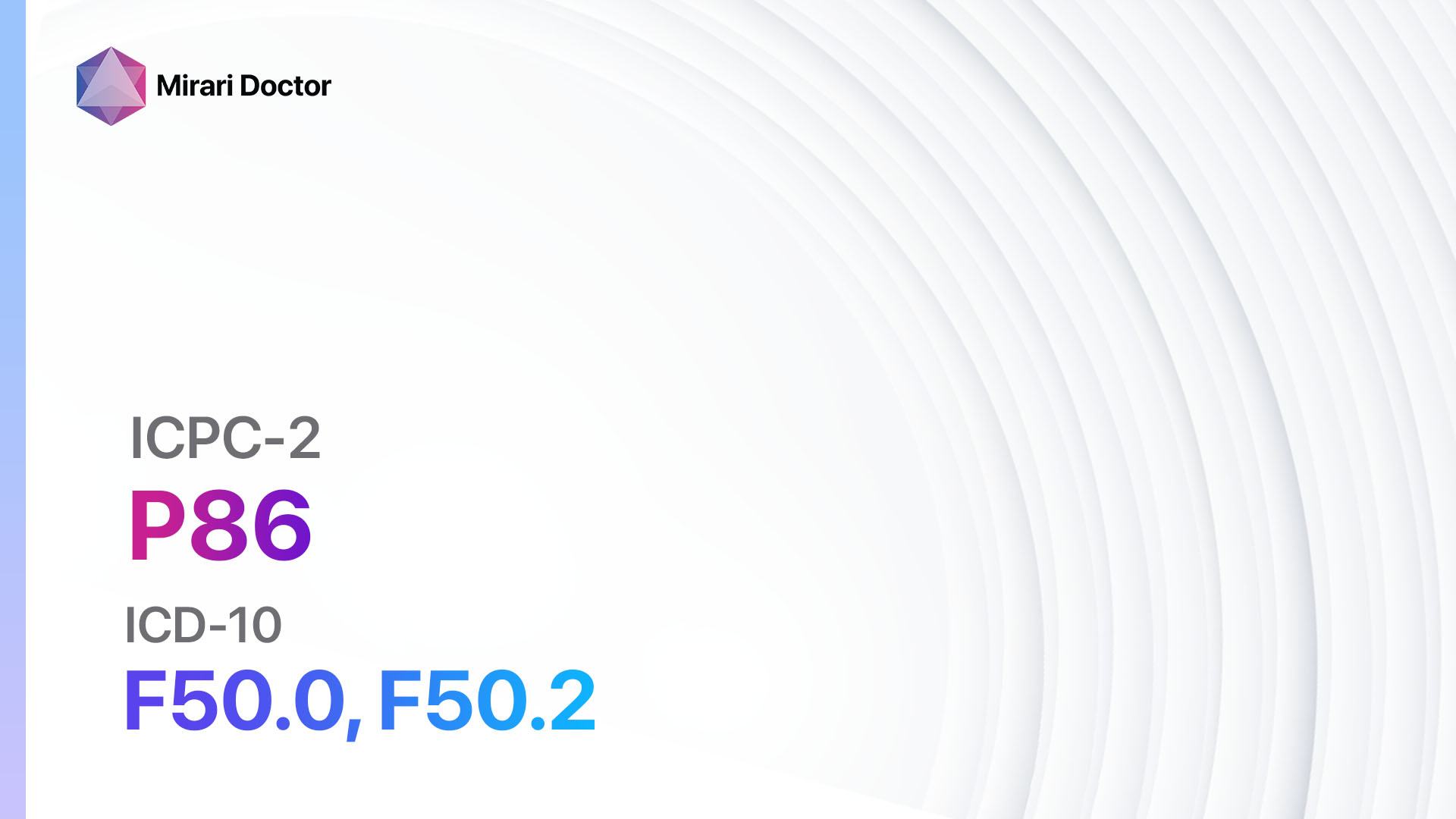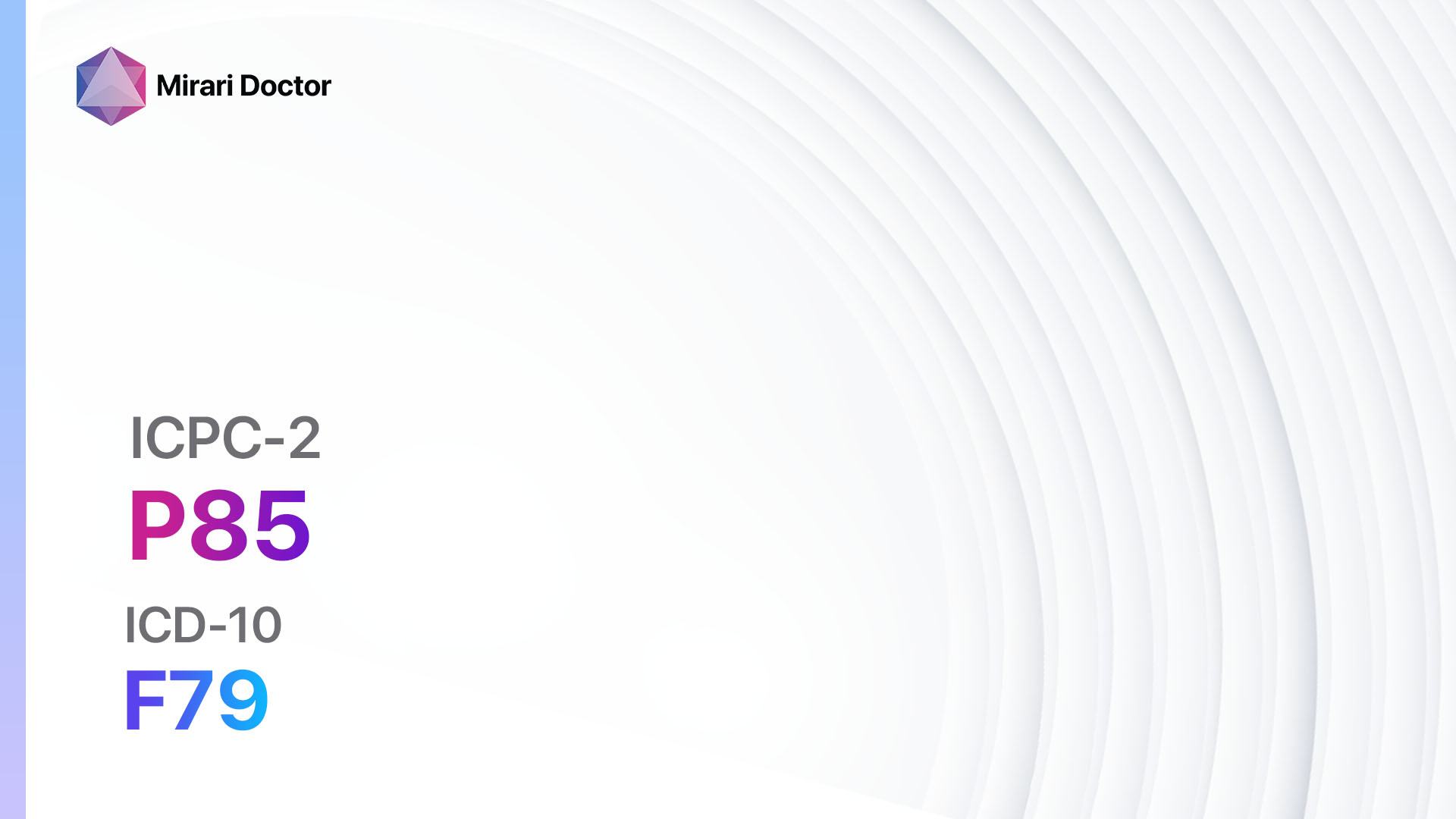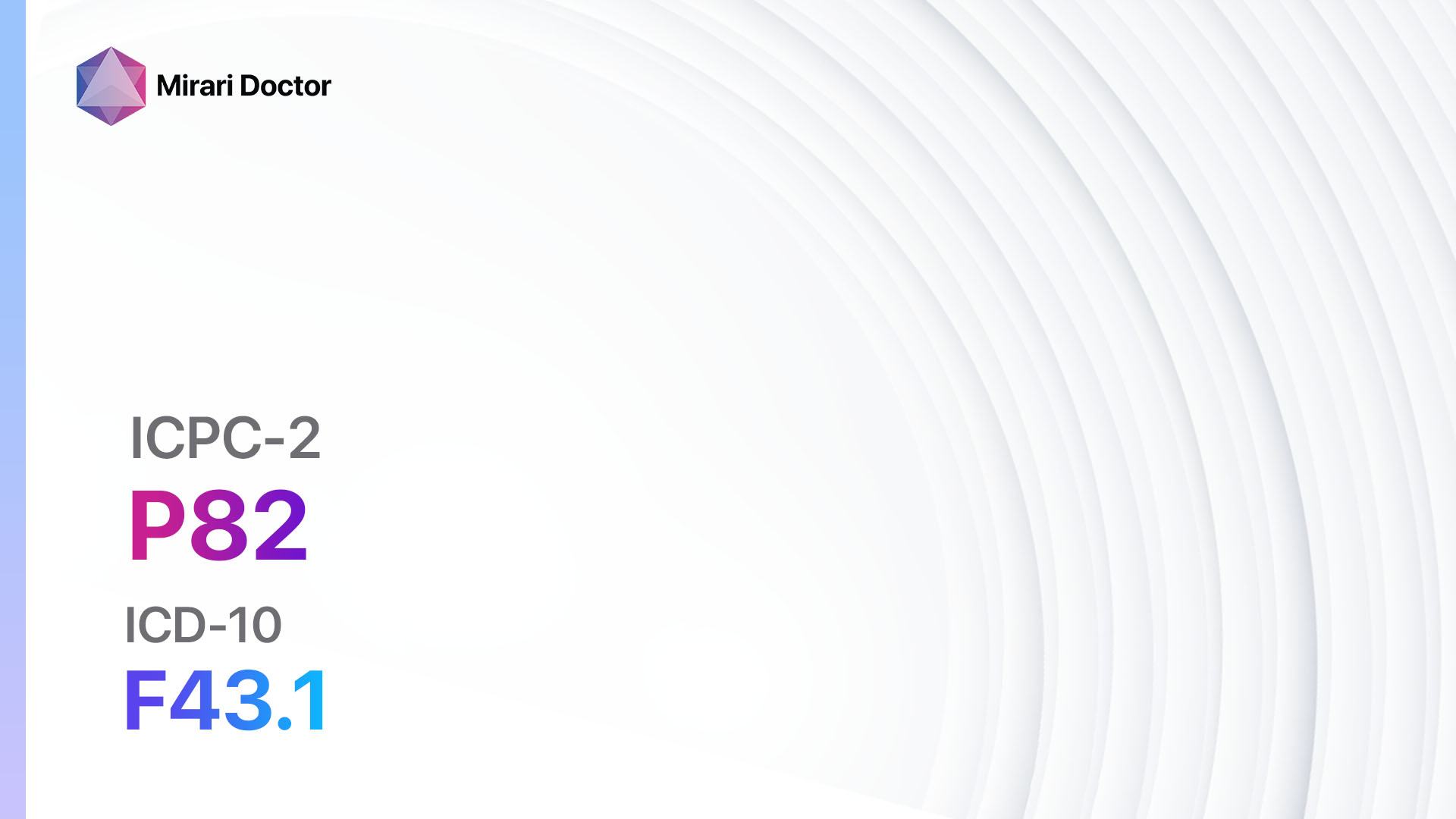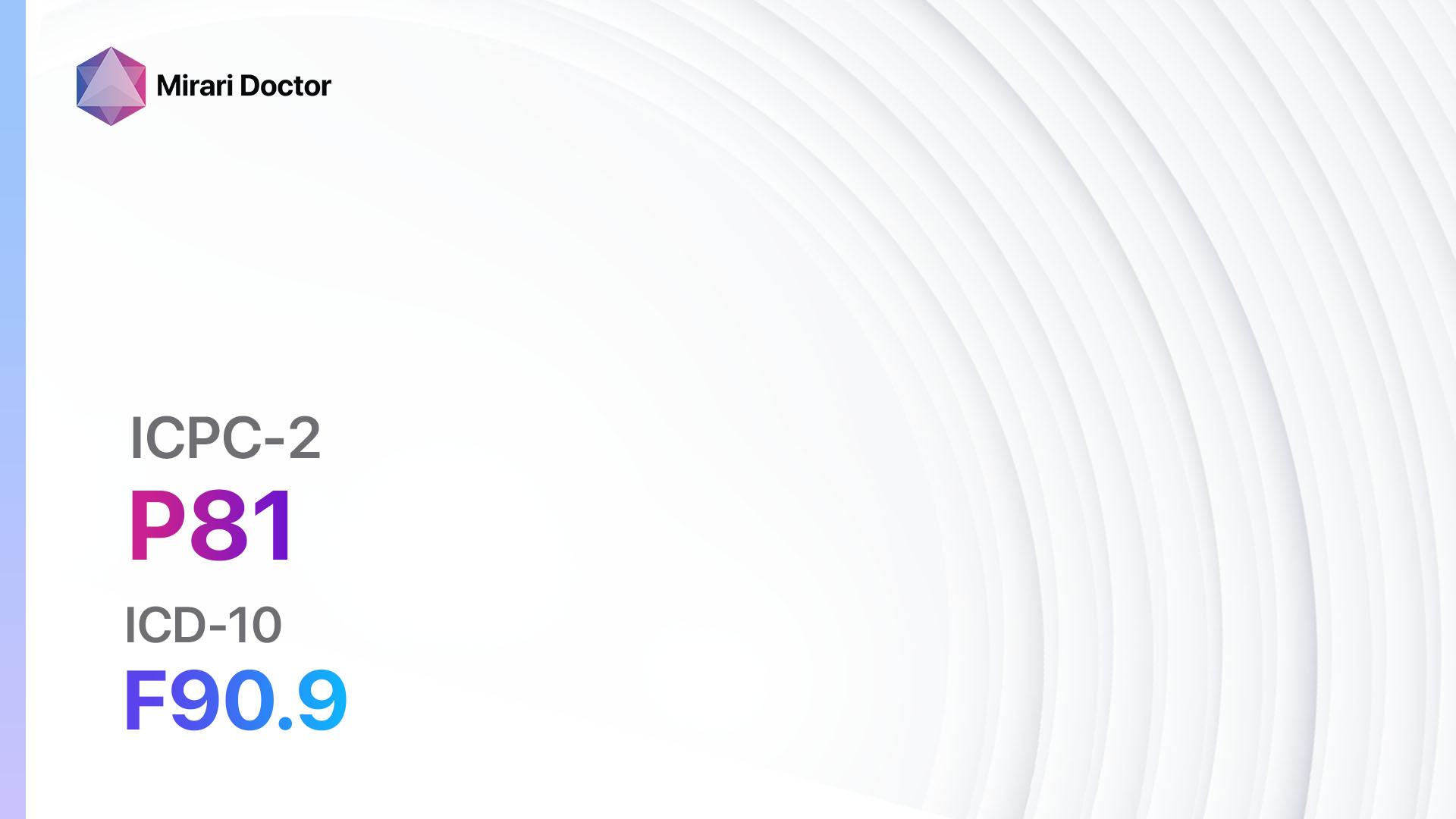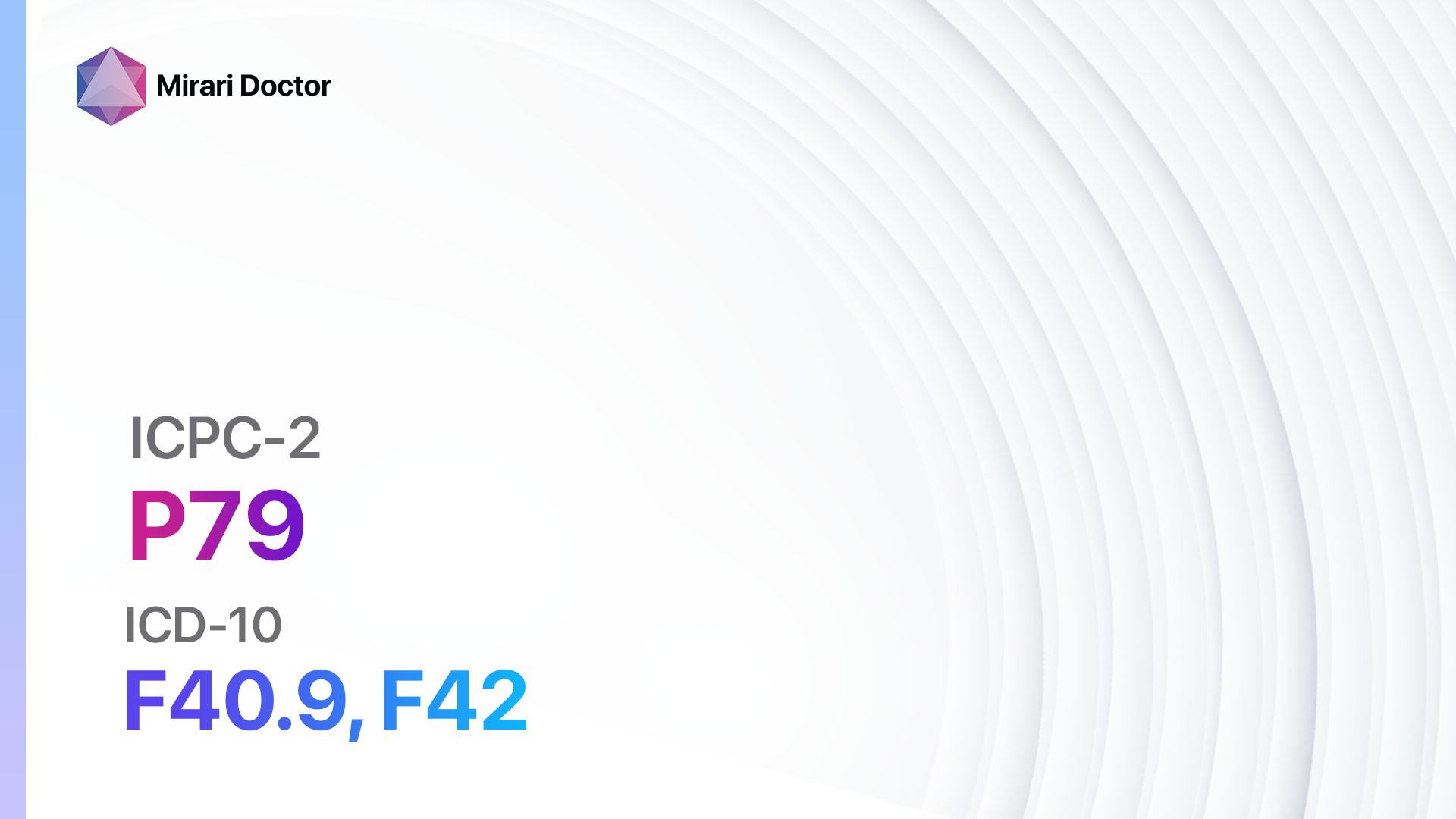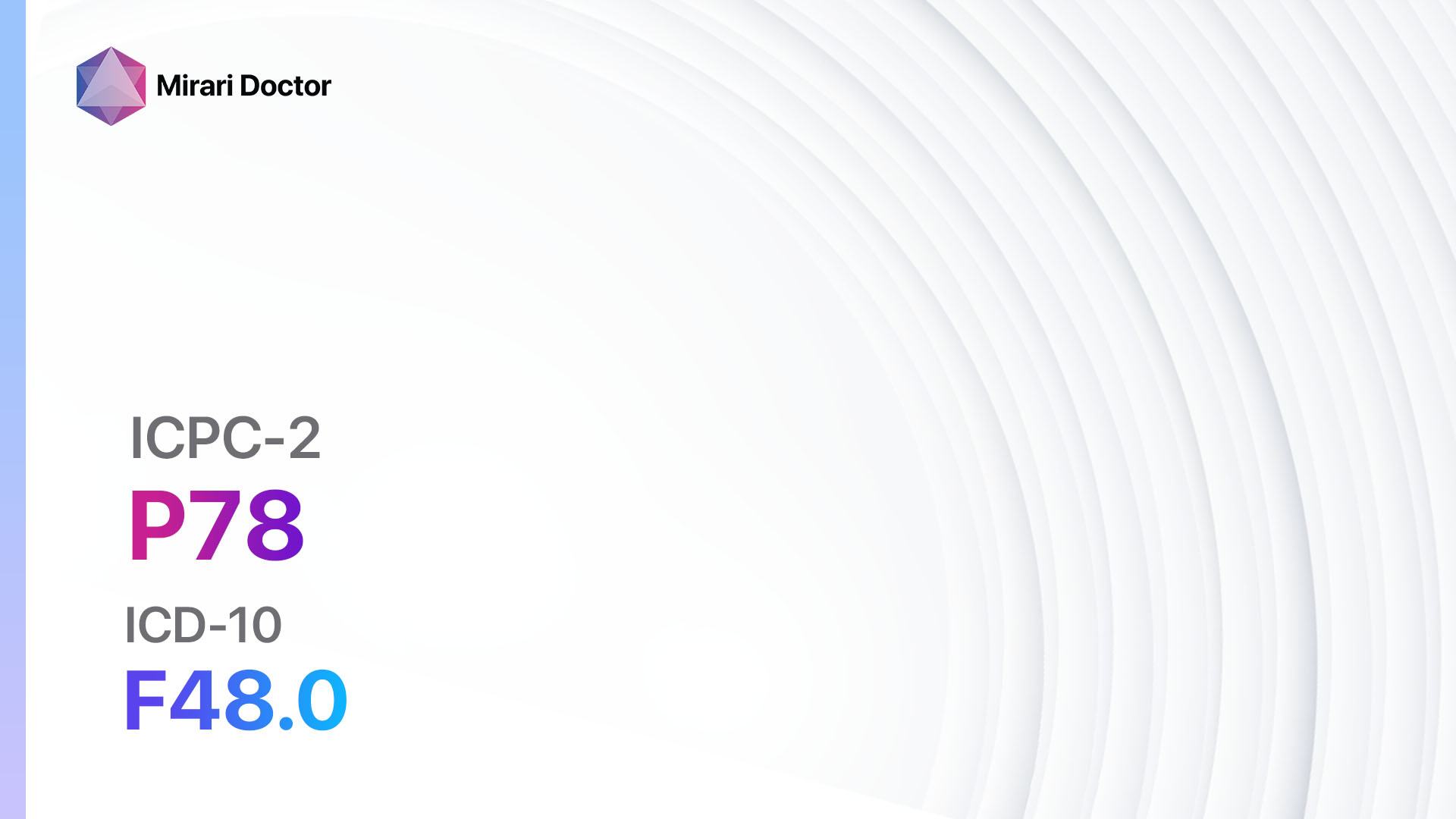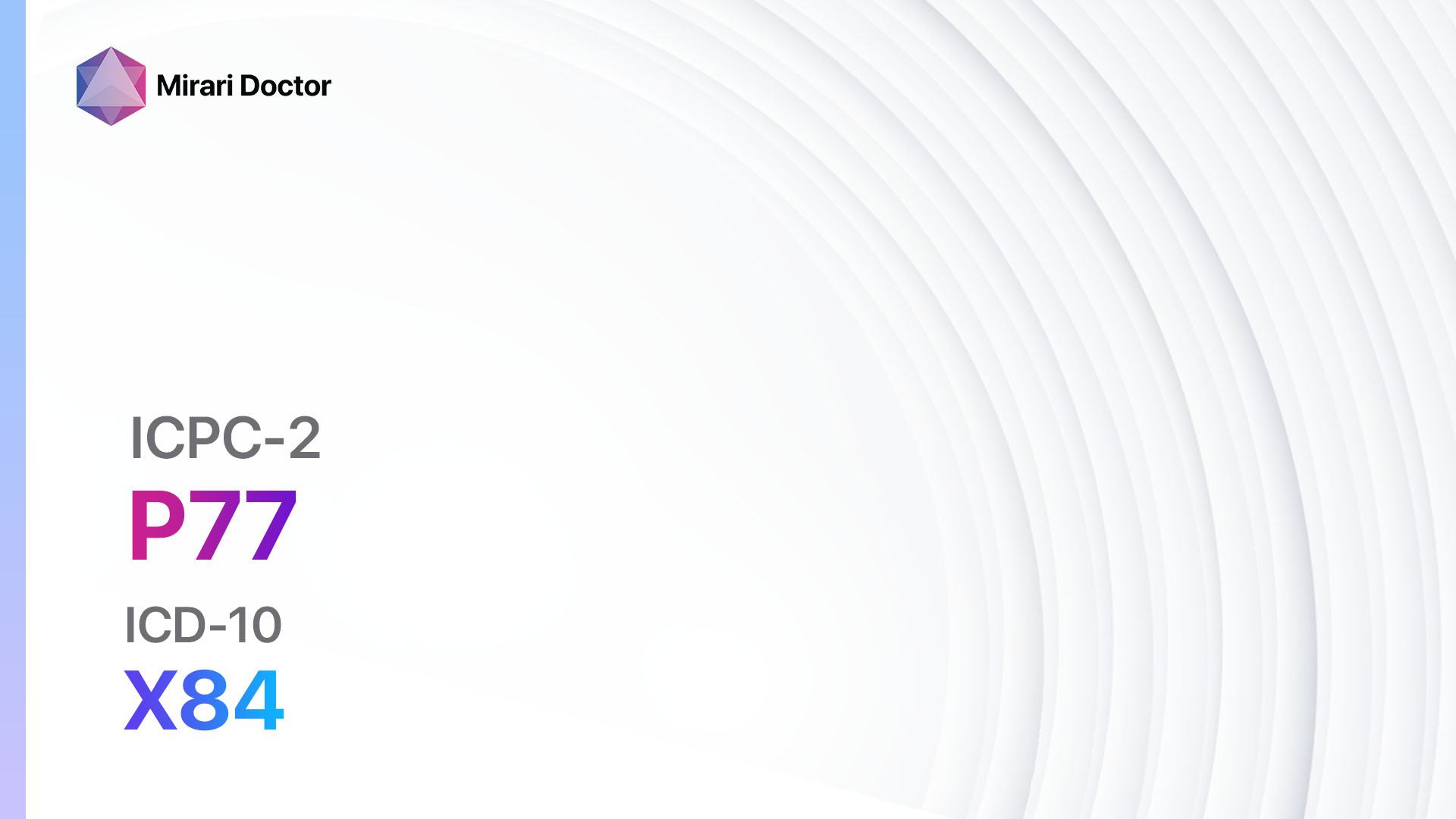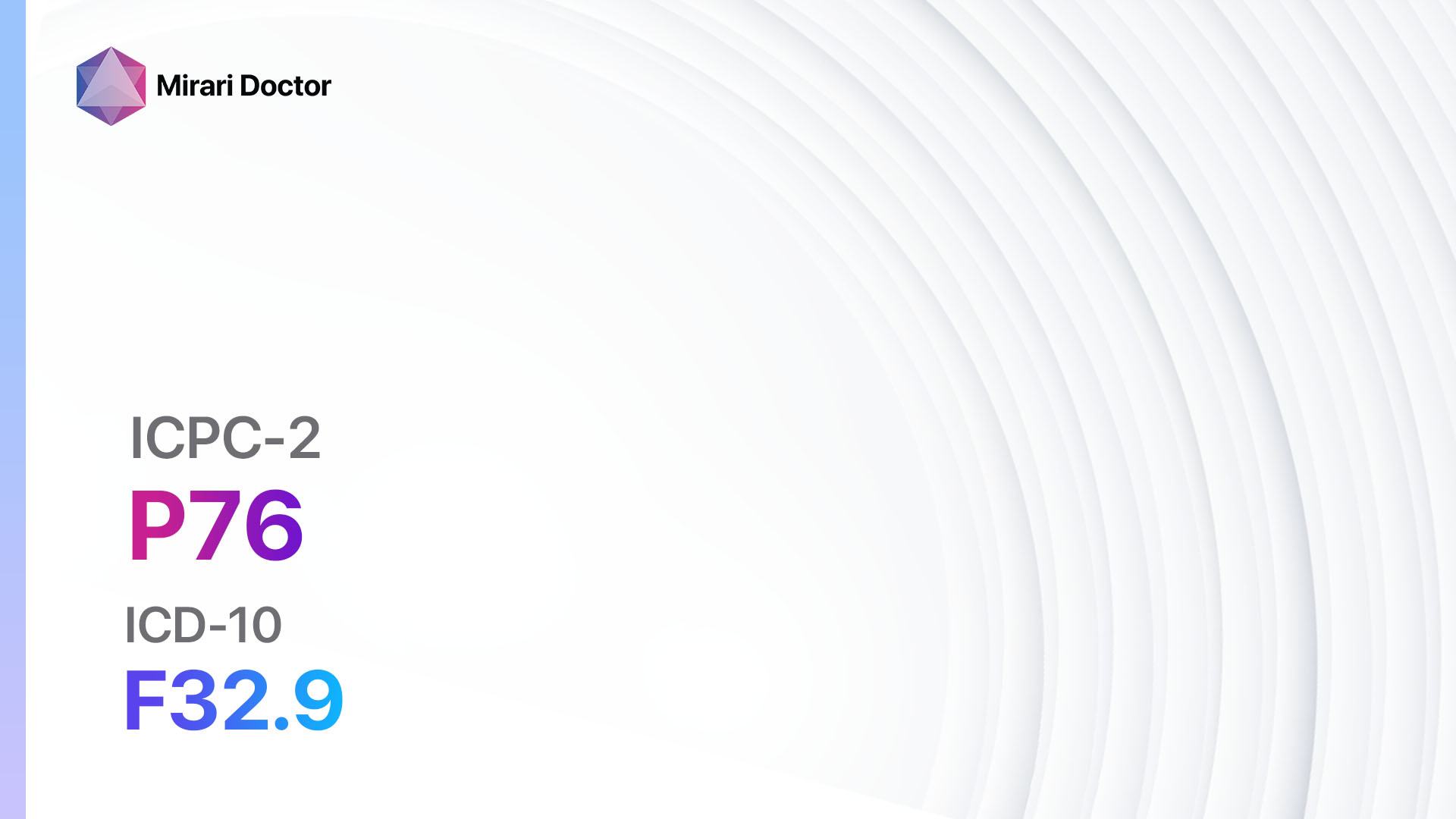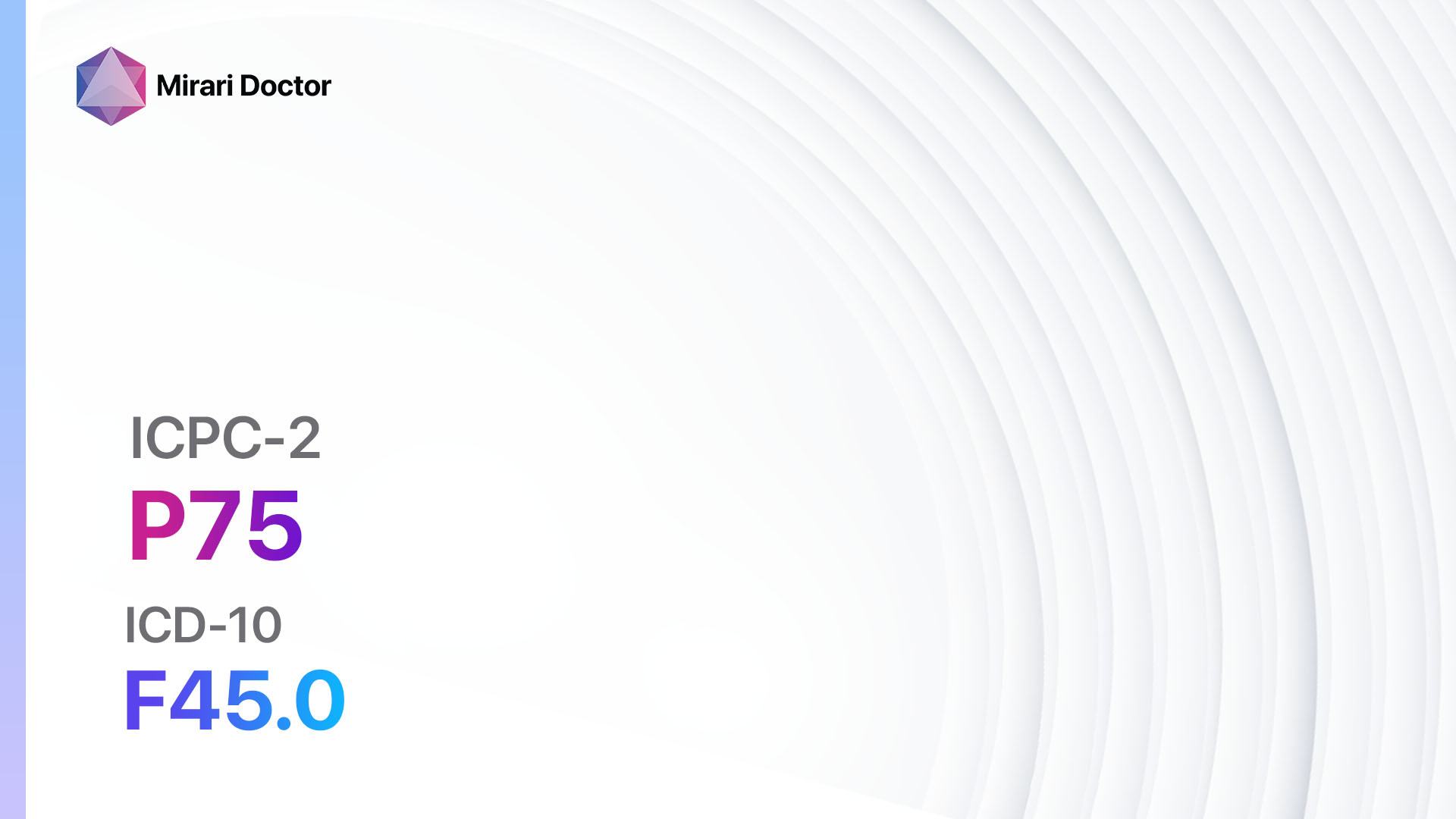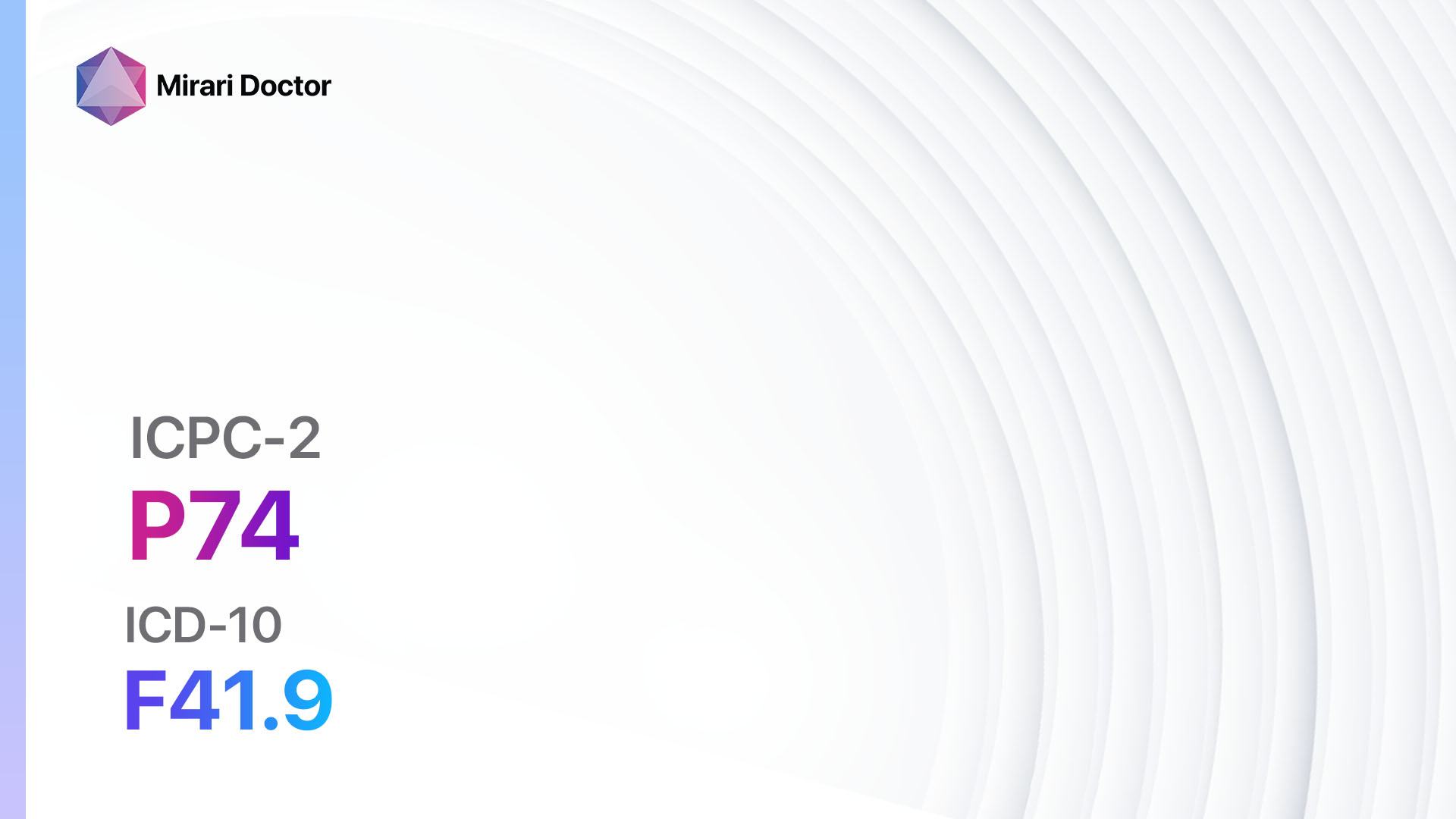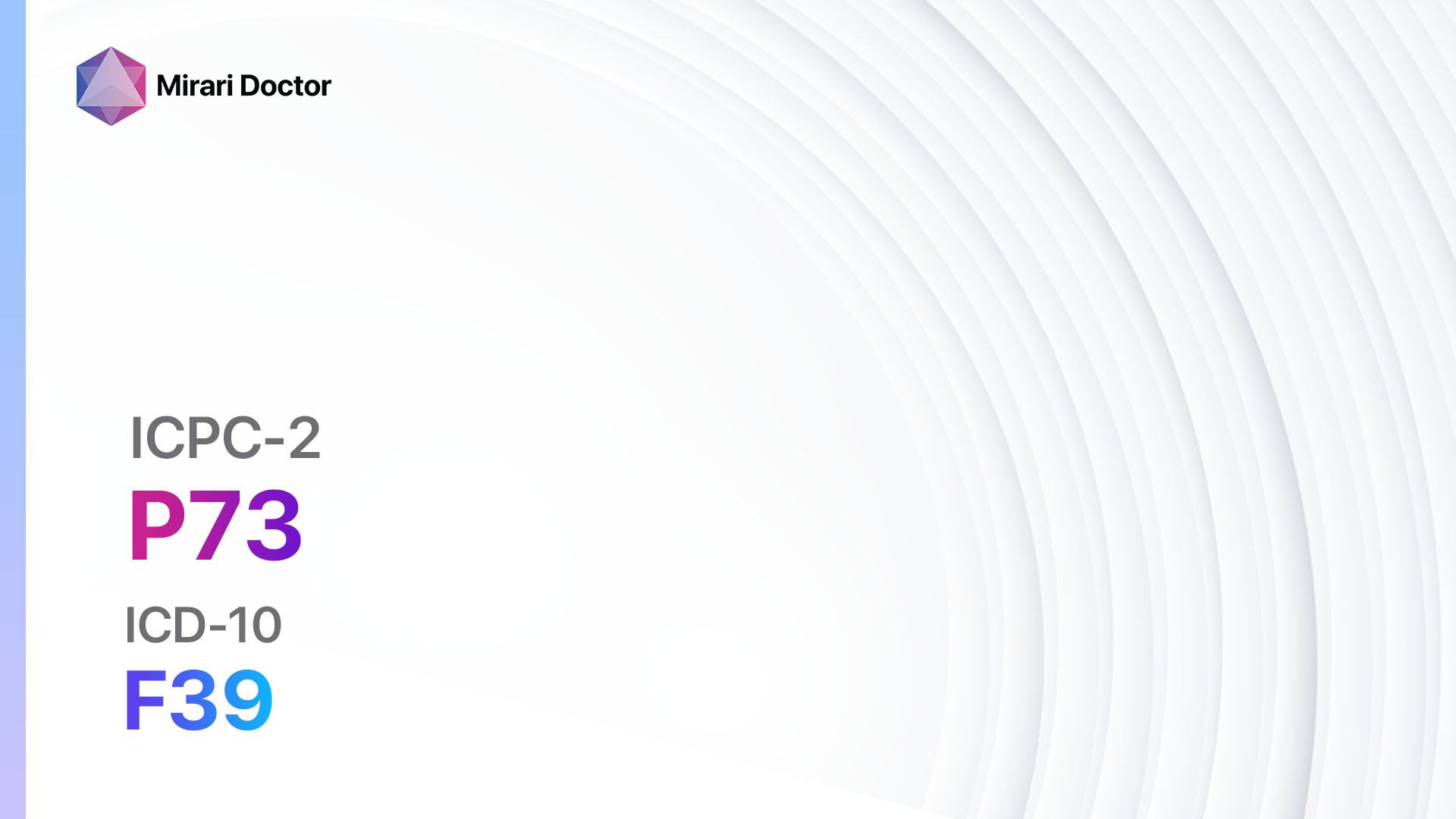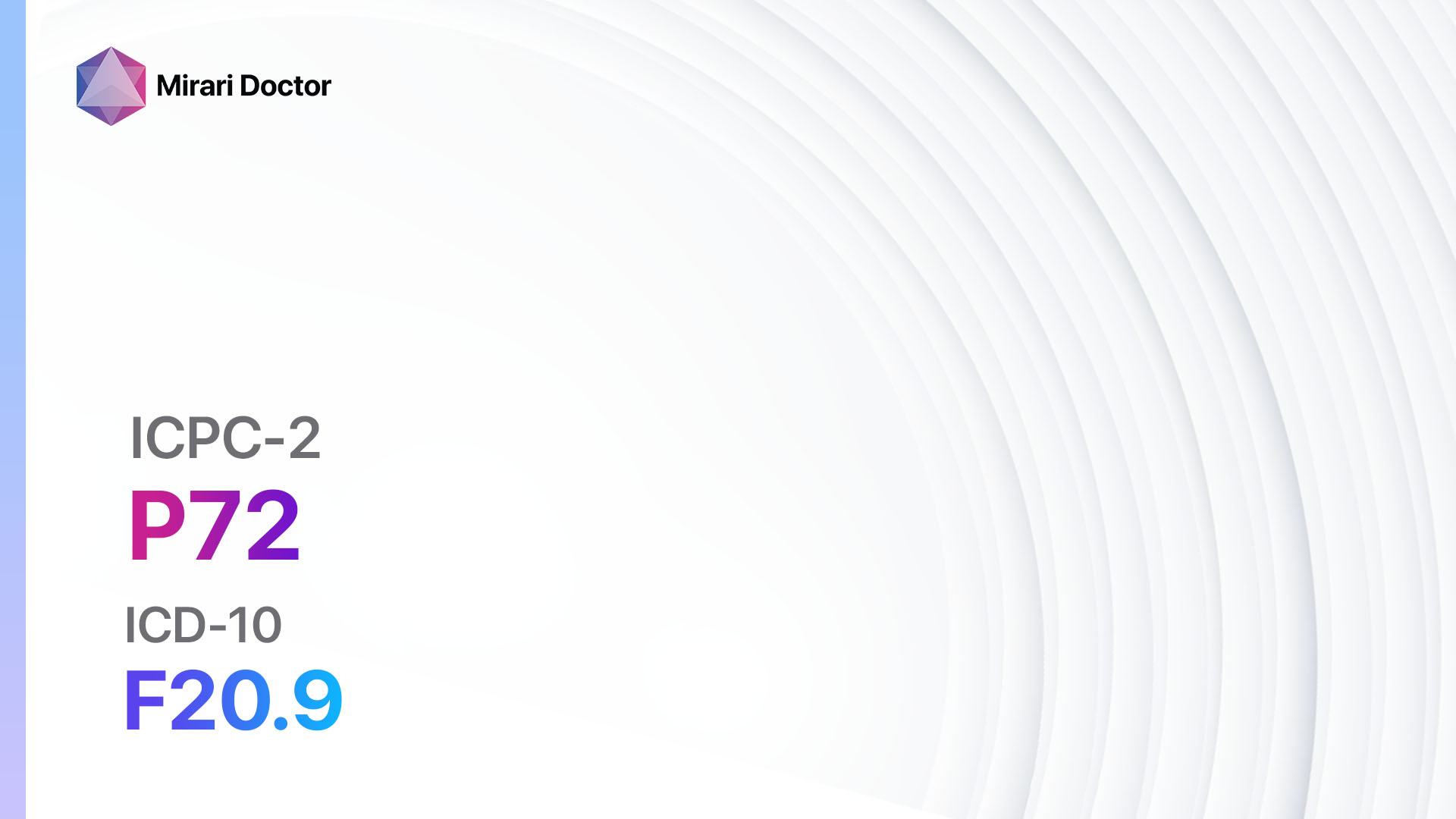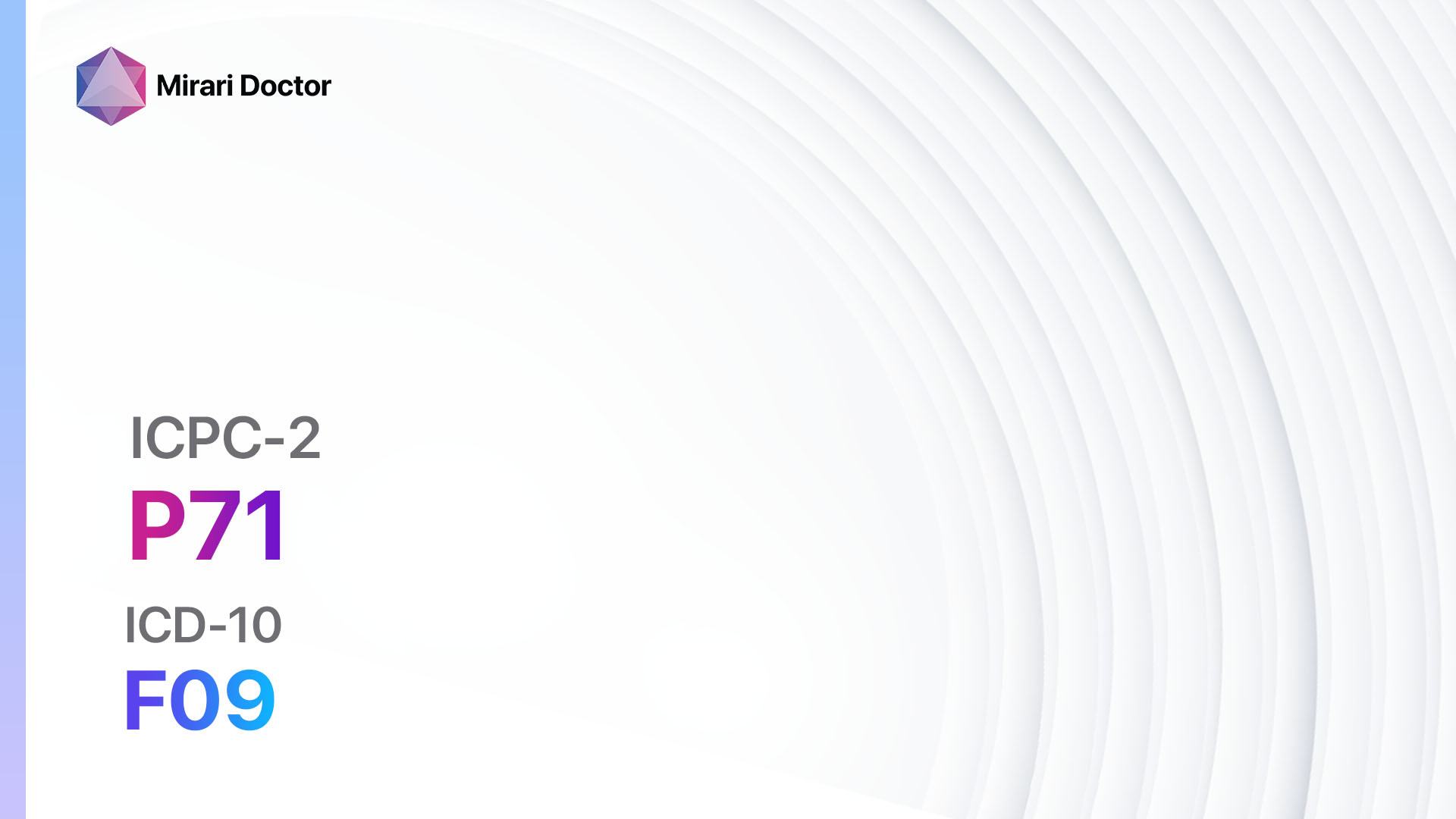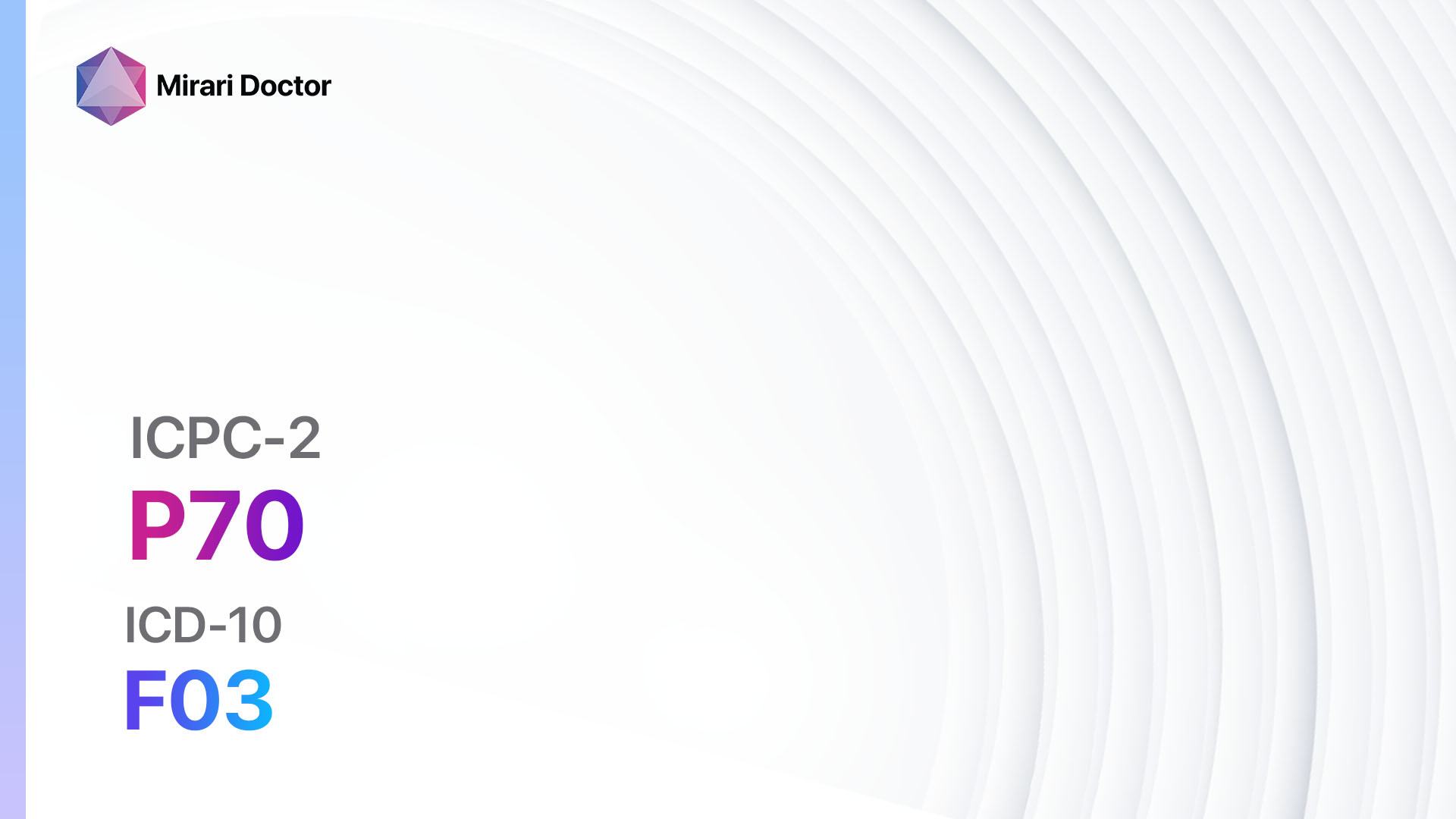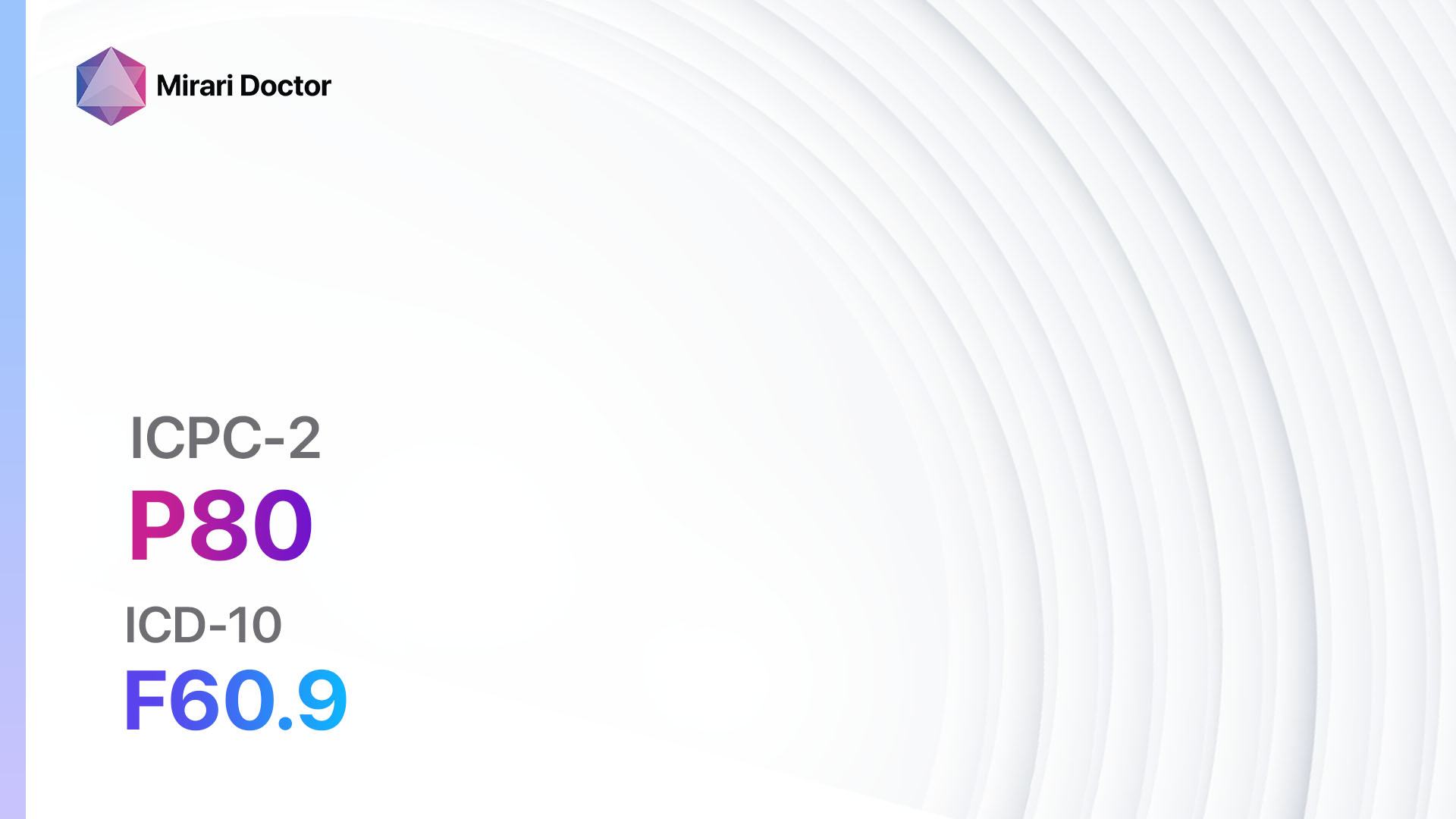
Introduction
Personality disorder is a mental health condition characterized by enduring patterns of behavior, cognition, and inner experience that deviate from cultural expectations[1]. It affects the way individuals perceive themselves, relate to others, and cope with daily life[2]. This guide aims to provide a comprehensive overview of the symptoms, causes, diagnostic steps, possible interventions, and lifestyle interventions for personality disorder.
Codes
Symptoms
- Emotional instability: Frequent mood swings, intense anger, irritability, and anxiety[3].
- Impulsive behavior: Engaging in risky activities without considering the consequences[4].
- Distorted self-image: Feeling worthless, inadequate, or having a strong fear of abandonment[5].
- Difficulty maintaining relationships: Struggling to establish and maintain stable relationships[6].
- Chronic feelings of emptiness: Feeling a persistent sense of emptiness and boredom[7].
- Intense fear of abandonment: Exhibiting clingy or dependent behavior to avoid abandonment[8].
- Identity disturbance: Uncertainty about self-identity, goals, and values[9].
- Self-harming behavior: Engaging in self-harm or suicidal ideation[10].
Causes
- Genetic factors: Certain personality traits may be inherited, increasing the risk of developing a personality disorder.
- Environmental factors: Childhood trauma, neglect, or abuse can contribute to the development of personality disorders.
- Brain abnormalities: Structural or functional abnormalities in the brain may play a role in the development of personality disorders.
- Family history: Having a family member with a personality disorder increases the risk of developing the condition.
Diagnostic Steps
Medical History
- Gather information about the patient’s personal and family medical history.
- Assess for any history of childhood trauma, neglect, or abuse.
- Evaluate the patient’s social and occupational functioning.
- Determine the presence of any comorbid mental health conditions.
Physical Examination
- Perform a thorough physical examination to rule out any underlying medical conditions that may contribute to the symptoms.
- Assess for any signs of self-harm or physical trauma.
Laboratory Tests
- There are no specific laboratory tests to diagnose personality disorder.
- However, blood tests may be conducted to rule out any underlying medical conditions that may mimic the symptoms of personality disorder.
Diagnostic Imaging
- Diagnostic imaging is not typically used in the diagnosis of personality disorder.
Other Tests
- Psychological assessment: Conduct a comprehensive psychological assessment, including interviews and standardized questionnaires, to evaluate the patient’s symptoms and determine the presence of a personality disorder.
Follow-up and Patient Education
- Schedule regular follow-up appointments to monitor the patient’s progress and adjust the treatment plan if necessary.
- Provide patient education materials and resources to help the patient understand their condition and learn coping strategies.
Possible Interventions
Traditional Interventions
Medications:
Top 5 drugs for Personality disorder:
- Selective Serotonin Reuptake Inhibitors (SSRIs) (e.g., Fluoxetine, Sertraline):
- Cost: Generic versions can be $3-$50/month.
- Contraindications: Hypersensitivity to SSRIs, concurrent use of MAO inhibitors.
- Side effects: Nausea, headache, sexual dysfunction.
- Severe side effects: Serotonin syndrome, suicidal ideation.
- Drug interactions: MAO inhibitors, other serotonergic drugs.
- Warning: Increased risk of suicidal thoughts in young adults.
- Mood stabilizers (e.g., Lithium, Valproate):
- Cost: Generic versions can be $10-$50/month.
- Contraindications: Renal impairment, pregnancy.
- Side effects: Nausea, tremor, weight gain.
- Severe side effects: Renal toxicity, hepatotoxicity.
- Drug interactions: NSAIDs, diuretics.
- Warning: Regular monitoring of renal and liver function required.
- Antipsychotics (e.g., Risperidone, Olanzapine):
- Cost: Generic versions can be $10-$100/month.
- Contraindications: Hypersensitivity to antipsychotics, dementia-related psychosis.
- Side effects: Sedation, weight gain, extrapyramidal symptoms.
- Severe side effects: Neuroleptic malignant syndrome, tardive dyskinesia.
- Drug interactions: Other antipsychotics, CNS depressants.
- Warning: Increased risk of mortality in elderly patients with dementia-related psychosis.
- Benzodiazepines (e.g., Diazepam, Lorazepam):
- Cost: Generic versions can be $3-$50/month.
- Contraindications: Hypersensitivity to benzodiazepines, respiratory depression.
- Side effects: Sedation, dizziness, cognitive impairment.
- Severe side effects: Respiratory depression, dependence.
- Drug interactions: CNS depressants, opioids.
- Warning: Risk of dependence and withdrawal symptoms with long-term use.
- Antidepressants (e.g., Escitalopram, Venlafaxine):
- Cost: Generic versions can be $3-$50/month.
- Contraindications: Hypersensitivity to antidepressants, concurrent use of MAO inhibitors.
- Side effects: Nausea, headache, sexual dysfunction.
- Severe side effects: Serotonin syndrome, suicidal ideation.
- Drug interactions: MAO inhibitors, other serotonergic drugs.
- Warning: Increased risk of suicidal thoughts in young adults.
Alternative Drugs:
- Anticonvulsants (e.g., Carbamazepine, Lamotrigine): May be used as mood stabilizers in certain cases.
- Atypical antipsychotics (e.g., Quetiapine, Aripiprazole): Can be used as adjunctive therapy for specific symptoms.
- Anxiolytics (e.g., Buspirone, Hydroxyzine): May help manage anxiety symptoms.
- Stimulants (e.g., Methylphenidate, Amphetamine): Can be used to address symptoms of inattention and impulsivity.
- Alpha-2 adrenergic agonists (e.g., Clonidine, Guanfacine): May be beneficial for impulsivity and aggression.
Psychotherapy:
- Cognitive Behavioral Therapy (CBT): Helps individuals identify and change negative thought patterns and behaviors.
- Dialectical Behavior Therapy (DBT): Focuses on developing skills to manage emotions, improve relationships, and reduce self-destructive behaviors.
- Schema Therapy: A longer-term therapy that helps individuals identify and change deeply ingrained patterns of thinking and behavior.
- Psychodynamic Therapy: Explores unconscious conflicts and unresolved issues from the past to promote personal growth and change.
- Group Therapy: Provides a supportive environment for individuals to share experiences, learn from others, and develop interpersonal skills.
Surgical Procedures
- There are no surgical procedures specifically for the treatment of personality disorder.
Alternative Interventions
- Art therapy: Utilizes creative processes to explore emotions, improve self-expression, and enhance self-awareness. Cost: $50-$150 per session.
- Mindfulness meditation: Helps individuals develop present-moment awareness and acceptance of their thoughts and emotions. Cost: Varies (free resources available).
- Yoga: Combines physical postures, breathing exercises, and meditation to promote relaxation and reduce stress. Cost: $10-$20 per class.
- Equine-assisted therapy: Involves interacting with horses to improve self-esteem, communication skills, and emotional regulation. Cost: $100-$200 per session.
- Music therapy: Uses music to address emotional, cognitive, and social needs. Cost: $50-$100 per session.
Lifestyle Interventions
- Regular exercise: Engaging in physical activity can help reduce stress, improve mood, and enhance overall well-being. Cost: Varies (free options available).
- Healthy diet: Consuming a balanced diet rich in fruits, vegetables, whole grains, and lean proteins can support mental health. Cost: Varies depending on food choices.
- Stress management techniques: Practicing relaxation techniques, such as deep breathing exercises or mindfulness, can help reduce stress levels. Cost: Varies (free resources available).
- Social support: Building and maintaining healthy relationships can provide emotional support and reduce feelings of isolation. Cost: Varies (free options available).
- Sleep hygiene: Establishing a regular sleep schedule and creating a relaxing bedtime routine can improve sleep quality. Cost: Varies (free options available).
It is important to note that the cost ranges provided are approximate and may vary depending on the location and availability of the interventions. It is recommended to consult with healthcare professionals for personalized treatment options and cost estimates.
Mirari Cold Plasma Alternative Intervention
Understanding Mirari Cold Plasma
- Safe and Non-Invasive Treatment: Mirari Cold Plasma is a safe and non-invasive treatment option for various skin conditions. It does not require incisions, minimizing the risk of scarring, bleeding, or tissue damage.
- Efficient Extraction of Foreign Bodies: Mirari Cold Plasma facilitates the removal of foreign bodies from the skin by degrading and dissociating organic matter, allowing easier access and extraction.
- Pain Reduction and Comfort: Mirari Cold Plasma has a local analgesic effect, providing pain relief during the treatment, making it more comfortable for the patient.
- Reduced Risk of Infection: Mirari Cold Plasma has antimicrobial properties, effectively killing bacteria and reducing the risk of infection.
- Accelerated Healing and Minimal Scarring: Mirari Cold Plasma stimulates wound healing and tissue regeneration, reducing healing time and minimizing the formation of scars.
Mirari Cold Plasma Prescription
Video instructions for using Mirari Cold Plasma Device – P80 Personality disorder (ICD-10:F60.9)
| Mild | Moderate | Severe |
| Mode setting: 2 (Wound Healing) Location: 7 (Neuro system & ENT) Morning: 15 minutes, Evening: 15 minutes | Mode setting: 2 (Wound Healing) Location: 7 (Neuro system & ENT) Morning: 30 minutes, Lunch: 30 minutes, Evening: 30 minutes | Mode setting: 2 (Wound Healing) Location: 7 (Neuro system & ENT) Morning: 30 minutes, Lunch: 30 minutes, Evening: 30 minutes |
| Mode setting: 7 (Immunotherapy) Location: 1 (Sacrum) Morning: 15 minutes, Evening: 15 minutes | Mode setting: 7 (Immunotherapy) Location: 1 (Sacrum) Morning: 30 minutes, Lunch: 30 minutes, Evening: 30 minutes | Mode setting: 7 (Immunotherapy) Location: 1 (Sacrum) Morning: 30 minutes, Lunch: 30 minutes, Evening: 30 minutes |
| Total Morning:30minutesapprox.$5USD, Evening:30minutesapprox.$5USD | Total Morning:60minutesapprox.$10USD, Lunch:60minutesapprox. $10 USD, Evening:60minutesapprox. $10 USD, | Total Morning:60minutesapprox.$10USD, Lunch:60minutesapprox. $10 USD, Evening:60minutesapprox. $10 USD, |
| Usualtreatmentfor7-60daysapprox.$70USD–$600USD | Usualtreatmentfor6-8weeksapprox.$1,260USD–$1,680USD | Usualtreatmentfor3-6monthsapprox.$2,700USD–$5,400USD |
 |
|
Use the Mirari Cold Plasma device to treat Personality disorder effectively.
WARNING: MIRARI COLD PLASMA IS DESIGNED FOR THE HUMAN BODY WITHOUT ANY ARTIFICIAL OR THIRD PARTY PRODUCTS. USE OF OTHER PRODUCTS IN COMBINATION WITH MIRARI COLD PLASMA MAY CAUSE UNPREDICTABLE EFFECTS, HARM OR INJURY. PLEASE CONSULT A MEDICAL PROFESSIONAL BEFORE COMBINING ANY OTHER PRODUCTS WITH USE OF MIRARI.
Step 1: Cleanse the Skin
- Start by cleaning the affected area of the skin with a gentle cleanser or mild soap and water. Gently pat the area dry with a clean towel.
Step 2: Prepare the Mirari Cold Plasma device
- Ensure that the Mirari Cold Plasma device is fully charged or has fresh batteries as per the manufacturer’s instructions. Make sure the device is clean and in good working condition.
- Switch on the Mirari device using the power button or by following the specific instructions provided with the device.
- Some Mirari devices may have adjustable settings for intensity or treatment duration. Follow the manufacturer’s instructions to select the appropriate settings based on your needs and the recommended guidelines.
Step 3: Apply the Device
- Place the Mirari device in direct contact with the affected area of the skin. Gently glide or hold the device over the skin surface, ensuring even coverage of the area experiencing.
- Slowly move the Mirari device in a circular motion or follow a specific pattern as indicated in the user manual. This helps ensure thorough treatment coverage.
Step 4: Monitor and Assess:
- Keep track of your progress and evaluate the effectiveness of the Mirari device in managing your Personality disorder. If you have any concerns or notice any adverse reactions, consult with your health care professional.
Note
This guide is for informational purposes only and should not replace the advice of a medical professional. Always consult with your healthcare provider or a qualified medical professional for personal advice, diagnosis, or treatment. Do not solely rely on the information presented here for decisions about your health. Use of this information is at your own risk. The authors of this guide, nor any associated entities or platforms, are not responsible for any potential adverse effects or outcomes based on the content.
Mirari Cold Plasma System Disclaimer
- Purpose: The Mirari Cold Plasma System is a Class 2 medical device designed for use by trained healthcare professionals. It is registered for use in Thailand and Vietnam. It is not intended for use outside of these locations.
- Informational Use: The content and information provided with the device are for educational and informational purposes only. They are not a substitute for professional medical advice or care.
- Variable Outcomes: While the device is approved for specific uses, individual outcomes can differ. We do not assert or guarantee specific medical outcomes.
- Consultation: Prior to utilizing the device or making decisions based on its content, it is essential to consult with a Certified Mirari Tele-Therapist and your medical healthcare provider regarding specific protocols.
- Liability: By using this device, users are acknowledging and accepting all potential risks. Neither the manufacturer nor the distributor will be held accountable for any adverse reactions, injuries, or damages stemming from its use.
- Geographical Availability: This device has received approval for designated purposes by the Thai and Vietnam FDA. As of now, outside of Thailand and Vietnam, the Mirari Cold Plasma System is not available for purchase or use.
References
- American Psychiatric Association. (2013). Diagnostic and statistical manual of mental disorders (5th ed.).//doi.org/10.1176/appi.books.9780890425596
- Bateman, A., & Fonagy, P. (2010). Mentalization based treatment for borderline personality disorder. World Psychiatry, 9(1), 11-15.//doi.org/10.1002/j.2051-5545.2010.tb00255.x
- Linehan, M. M. (1993). Cognitive-behavioral treatment of borderline personality disorder. Guilford Press.
- Black, D. W., Blum, N., Pfohl, B., & Hale, N. (2004). Suicidal behavior in borderline personality disorder: prevalence, risk factors, prediction, and prevention. Journal of Personality Disorders, 18(3), 226-239.//doi.org/10.1521/pedi.18.3.226.35445
- Gunderson, J. G. (2011). Borderline personality disorder. New England Journal of Medicine, 364(21), 2037-2042.//doi.org/10.1056/nejmra1007358
- Skodol, A. E., Gunderson, J. G., Pfohl, B., Widiger, T. A., Livesley, W. J., & Siever, L. J. (2002). The borderline diagnosis I: psychopathology, comorbidity, and personality structure. Biological Psychiatry, 51(12), 936-950.//doi.org/10.1016/s0006-3223(02)01324-0
- Zanarini, M. C., Frankenburg, F. R., DeLuca, C. J., Hennen, J., Khera, G. S., & Gunderson, J. G. (1998). The pain of being borderline: dysphoric states specific to borderline personality disorder. Harvard Review of Psychiatry, 6(4), 201-207.//doi.org/10.3109/10673229809000330
- Gunderson, J. G., & Lyons-Ruth, K. (2008). BPD’s interpersonal hypersensitivity phenotype: a gene-environment-developmental model. Journal of Personality Disorders, 22(1), 22-41.//doi.org/10.1521/pedi.2008.22.1.22
- Jørgensen, C. R. (2006). Disturbed sense of identity in borderline personality disorder. Journal of Personality Disorders, 20(6), 618-644.//doi.org/10.1521/pedi.2006.20.6.618
- Soloff, P. H., Lynch, K. G., Kelly, T. M., Malone, K. M., & Mann, J. J. (2000). Characteristics of suicide attempts of patients with major depressive episode and borderline personality disorder: a comparative study. American Journal of Psychiatry, 157(4), 601-608.//doi.org/10.1176/appi.ajp.157.4.601
Related articles
Made in USA


